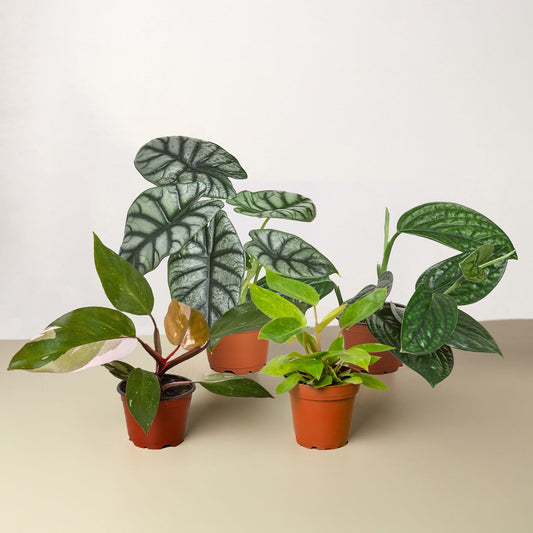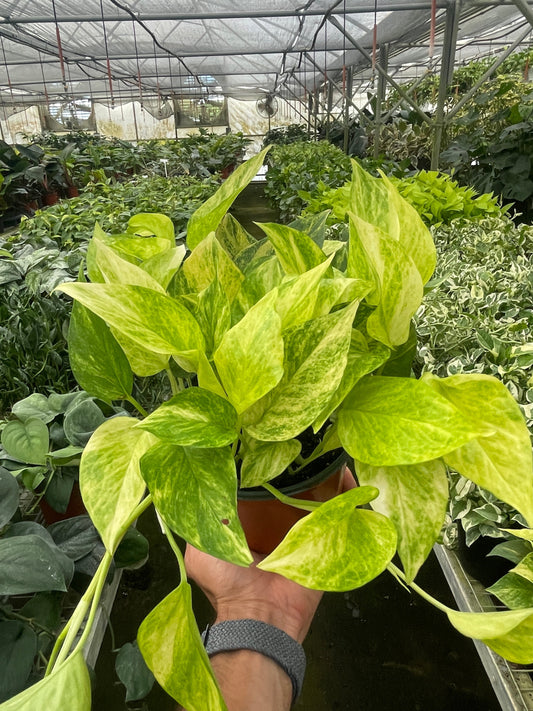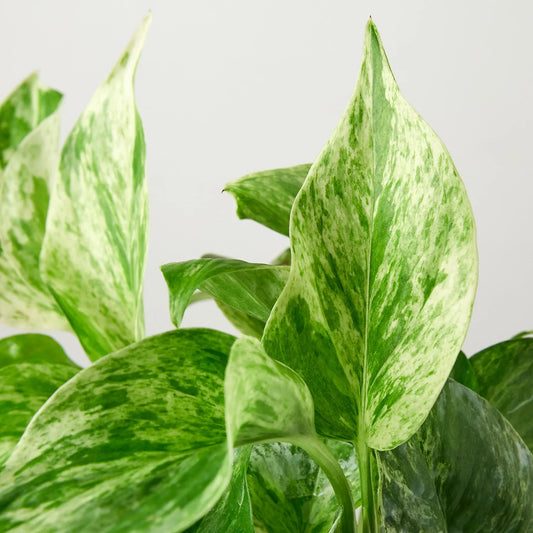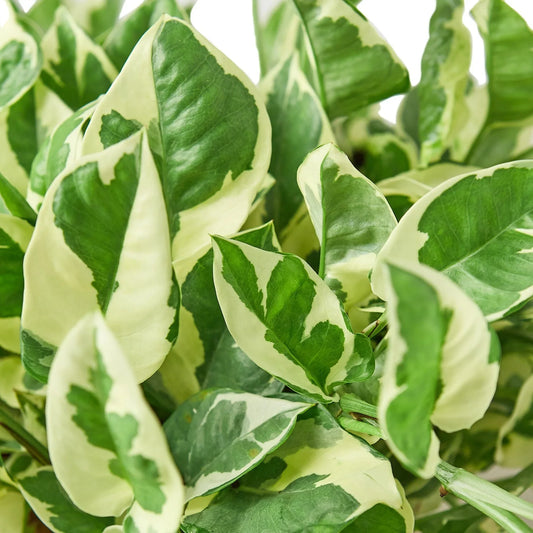My Zebra Haworthia Is Dying After Repotting It. Help!
Cafe Planta Team
So, you've just repotted your Zebra Haworthia, and now it's looking a little worse for wear. You’re not alone! Many plant lovers find themselves in the same spot, especially when their beloved succulent doesn't seem to bounce back after a little relocation. Don't worry; we'll work through this together and get your plant back on track.
In this article, we'll discuss what might be causing your Zebra Haworthia to struggle post-repotting. We'll cover everything from soil issues to watering mistakes and even lighting concerns. By the end, you'll have a clear action plan to help your plant thrive again.
Understanding Zebra Haworthia Needs
First things first, let's talk about what makes Zebra Haworthia tick. These charming succulents, with their striking white-striped leaves, are pretty low-maintenance compared to other houseplants. However, like all plants, they have specific needs.
Zebra Haworthias thrive in bright, indirect light. Too much direct sunlight can scorch their leaves, while too little can cause them to stretch out and become leggy. They prefer well-draining soil, which prevents water from pooling around the roots—something that these drought-resistant plants are not too fond of.
When it comes to watering, think of it like a Goldilocks situation—not too much, not too little, but just right. Let the soil dry out completely between waterings to mimic their natural habitat. With these basics in mind, we can start to pinpoint what might be going wrong after repotting.
Common Mistakes When Repotting
Repotting might seem straightforward, but there are a few common pitfalls that can lead to a stressed-out plant. One of the biggest issues is choosing the wrong pot size. You might think a bigger pot gives the roots more space to grow, but it can actually hold too much moisture, leading to root rot.
Another frequent mistake is not using the right soil mix. Zebra Haworthias need well-draining soil, like a cactus or succulent mix. Regular potting soil retains too much water and can suffocate the roots. Always check the soil before repotting to ensure it meets the plant's needs.
Finally, be gentle with the roots during the repotting process. It's easy to damage them if you're not careful. If the roots are tangled or bound, gently loosen them before placing the plant into its new home. Being attentive during these steps can make a huge difference in your plant's recovery.
Signs Your Zebra Haworthia Is Struggling
It’s crucial to recognize the signs of a struggling Zebra Haworthia early on. Some indicators that your plant might be in distress include wilting, yellowing leaves, or even black spots. These symptoms can point to overwatering, underwatering, or even pest issues.
Wilting leaves might mean your plant is thirsty, while soft, mushy leaves are often a sign of overwatering. Yellowing can indicate both issues, so it’s essential to check the soil's moisture level before deciding on the next steps.
Black spots can be a sign of rot, often caused by too much moisture. If you notice these spots, it’s time to take action quickly to prevent further damage. By paying attention to these signs, you can start to diagnose and treat the problem effectively.
Addressing Watering Mistakes
Watering can be a bit of a balancing act, especially after repotting. It's easy to overwater a plant in a larger pot or one that has been moved to a different environment. To avoid this, let the soil dry out completely before watering again.
A good rule of thumb is to stick your finger into the soil about an inch deep. If it feels dry, it’s time to water. If it’s still moist, hold off for a few more days. This simple method can prevent the common mistake of overwatering.
If your Zebra Haworthia is already showing signs of overwatering, like mushy leaves or black spots, you’ll need to act fast. Remove the plant from its pot, gently shake off excess soil, and let the roots air out for a day. Then, repot it in fresh, dry soil and adjust your watering schedule accordingly.
Ensuring Adequate Lighting
Lighting is another crucial factor in a Haworthia's well-being. These plants prefer bright, indirect light, which can be a tricky balance to achieve indoors. Too much direct sunlight can scorch their leaves, while too little light can cause them to become leggy.
Try placing your Zebra Haworthia near a window where it can receive plenty of natural light without being in the sun's direct path. If natural light is limited, you might consider using a grow light to supplement. Adjusting your plant’s light conditions can help it regain its health and vibrant appearance.
If your plant is already showing signs of light stress, like brown or crispy leaves, consider moving it to a more suitable spot. Remember, gradual changes are best, as sudden shifts can further shock the plant. This gentle approach can help your Haworthia adapt and thrive in its new environment.
Checking for Pests
Pests can sometimes hitch a ride on your plants, especially during the repotting process. Common culprits include mealybugs and spider mites, which can cause damage and stress to your Zebra Haworthia.
Inspect your plant closely for any signs of pests. Mealybugs appear as white, cotton-like substances on the leaves and stems, while spider mites might leave a web-like residue. If you spot any pests, isolate the plant immediately to prevent them from spreading to others.
Treating pests can be as simple as using a cotton swab dipped in rubbing alcohol to remove them. For larger infestations, consider using insecticidal soap or neem oil. Consistent monitoring and early intervention can keep your plant healthy and pest-free.
Adjusting the Soil Mix
The soil mix can make or break a repotting success story. As mentioned earlier, Zebra Haworthias need well-draining soil to prevent root rot and other moisture-related issues. If you suspect the soil mix is off, it might be time to reassess and adjust.
A cactus or succulent soil mix is ideal, as it allows for proper drainage. You can also mix in some perlite or sand to further enhance the drainage capability. Avoid heavy, moisture-retaining soils that can suffocate the roots.
If your plant’s current soil seems to be causing problems, gently remove the plant, shake off excess soil, and repot it with the correct mix. Doing so can make a significant difference in your plant's recovery and future health.
Giving Your Plant Time to Adjust
Sometimes, a little patience is all that's needed. Plants, like people, need time to adjust to changes. After repotting, your Zebra Haworthia might look a bit weary as it acclimates to its new surroundings.
During this adjustment period, keep an eye on its watering and light conditions, but give it some space to settle. Avoid the temptation to repot again or make drastic changes, as this can cause further stress.
Remember, plants are resilient, and with a bit of care and attention, your Zebra Haworthia will likely bounce back. Consistent care and a watchful eye will help your plant regain its energy and flourish once more.
Final Thoughts
In summary, if your Zebra Haworthia is struggling after repotting, review its needs for light, water, and soil. Adjust these factors with care, and keep a close watch for pests or signs of stress. With mindful attention, your plant will soon regain its health and beauty.
At Cafe Planta, we’re passionate about helping you care for your plants. Whether you’re looking for new additions or advice, we’d love to hear from you. Feel free to reach out via email or connect with us on Instagram. Let’s grow together!



















